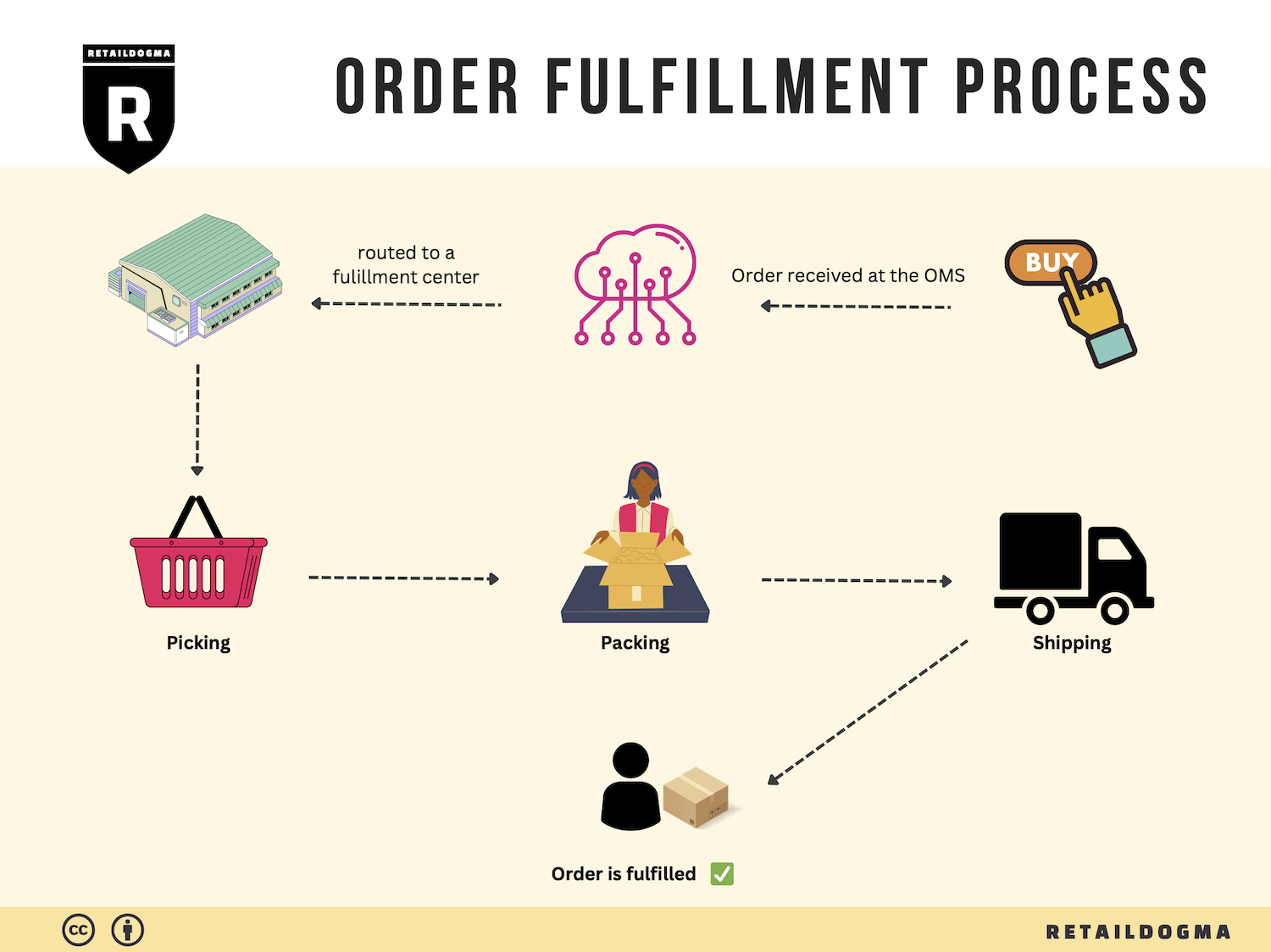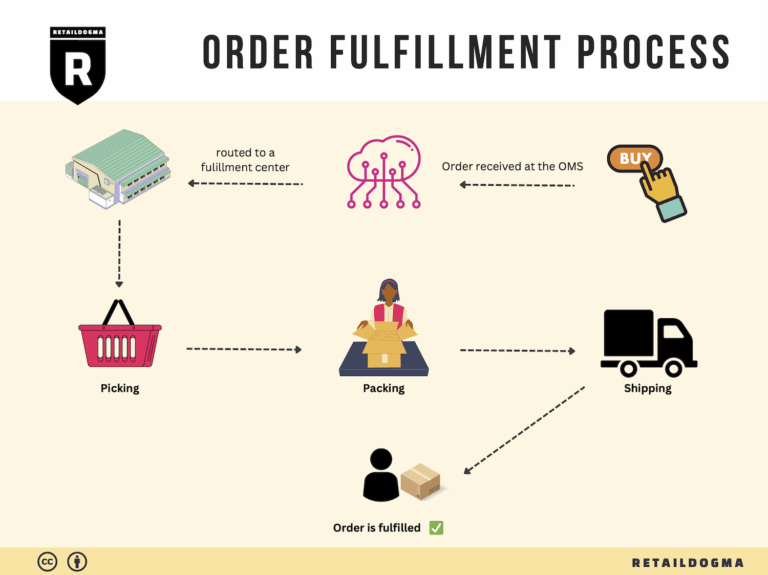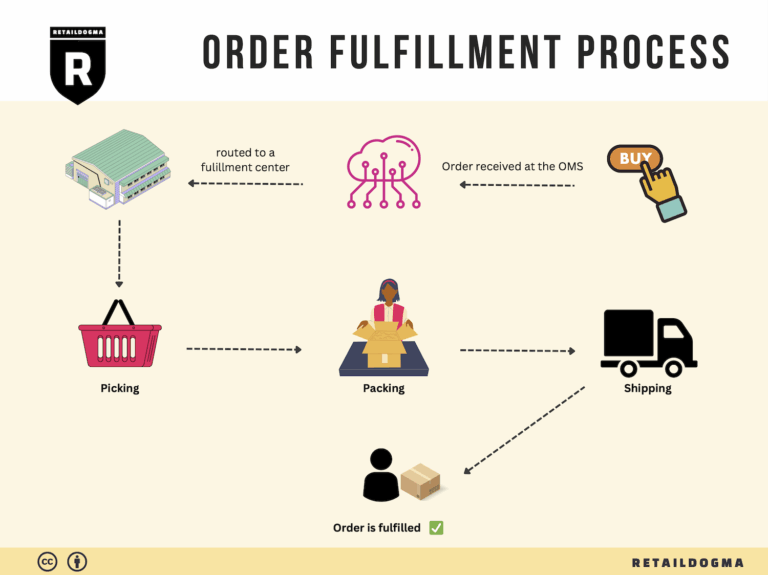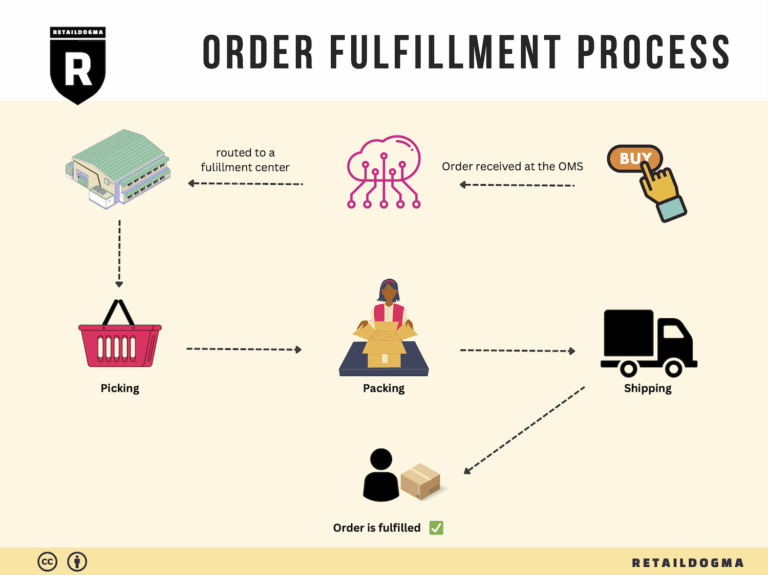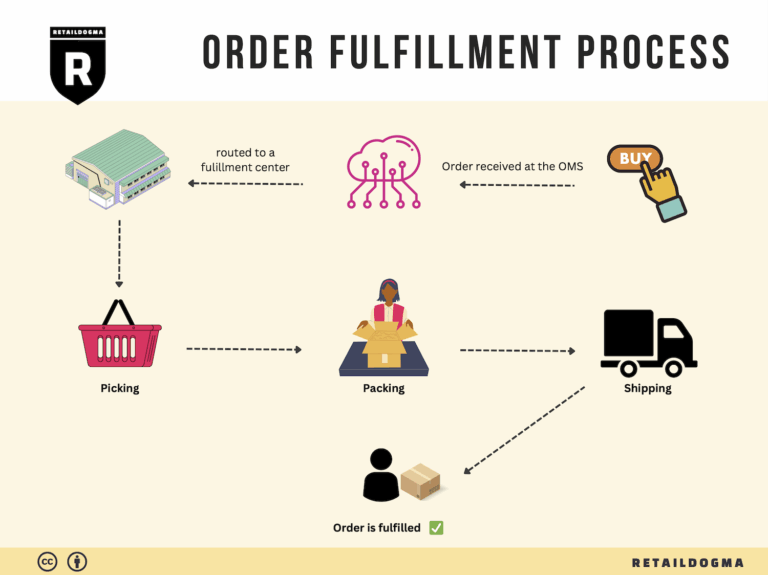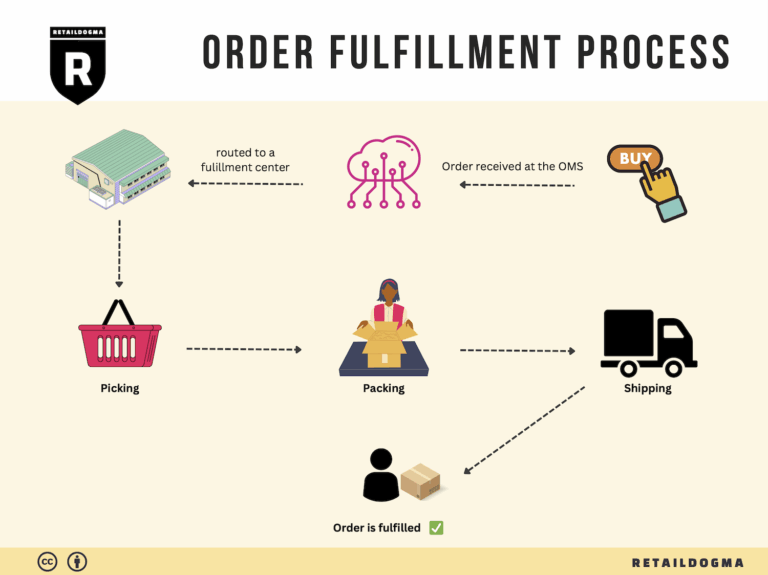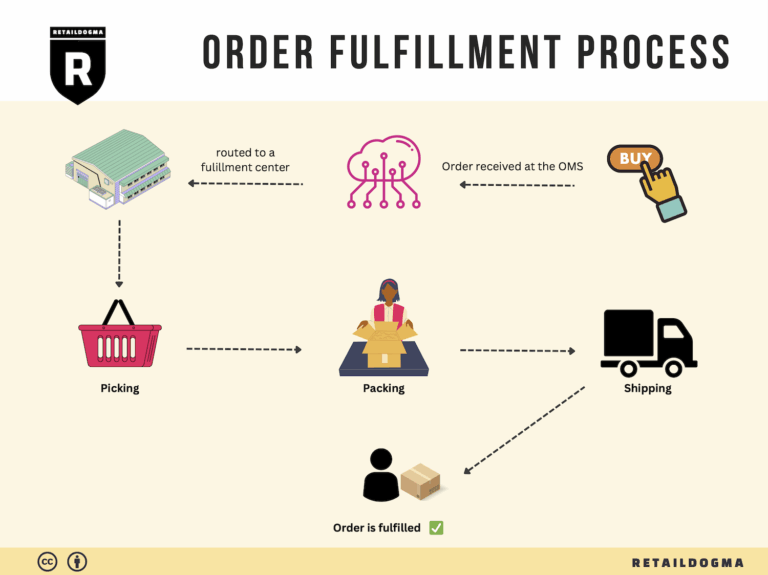Ecommerce Fulfillment Services: The Ultimate Guide (2025)
What is E-commerce Fulfillment? An Introduction for Growing Businesses
Understanding E-commerce Fulfillment
As your online business begins to thrive, the joy of increasing sales can quickly turn into a daunting challenge—packing and shipping orders can become overwhelming. Many entrepreneurs find themselves buried in boxes and packing tape, struggling to keep up with demand while ensuring that each order is fulfilled accurately and on time. This is where e-commerce fulfillment comes into play.
E-commerce fulfillment is simply the process of getting a product from your inventory to your customer’s doorstep. It encompasses everything from managing inventory and packing orders to shipping them and handling returns. For growing businesses, mastering fulfillment is crucial, as it directly impacts customer satisfaction and retention.
In this guide, we will explore the various models of e-commerce fulfillment that can help streamline your operations. We’ll delve into traditional warehousing, third-party logistics (3PL), and popular solutions like Fulfillment by Amazon (FBA). Each model has its advantages and disadvantages, and understanding them can help you choose the right fit for your business.
Core Services of E-commerce Fulfillment
We will also cover the core services involved in the fulfillment process, including order processing, inventory management, packing, shipping, and returns management. These services form the backbone of your fulfillment strategy and can significantly influence your operational efficiency.
Choosing the Right Fulfillment Partner
Selecting the right fulfillment partner is critical to your success. We will guide you through the factors to consider, such as location, technology integration, scalability, and customer service. A good partner can enhance your capabilities and help you scale your operations without sacrificing quality.
Pricing Models Explained
Finally, we will break down the pricing structures associated with different fulfillment solutions. Understanding the costs involved—from storage fees to shipping rates—will empower you to make informed financial decisions that align with your growth objectives.
Empowering Your Business Decisions
The ultimate goal of this guide is to equip you with the knowledge necessary to make smart, strategic decisions about your logistics and fulfillment processes. By optimizing your fulfillment strategy, you can focus on what you do best: growing your business and delighting your customers.
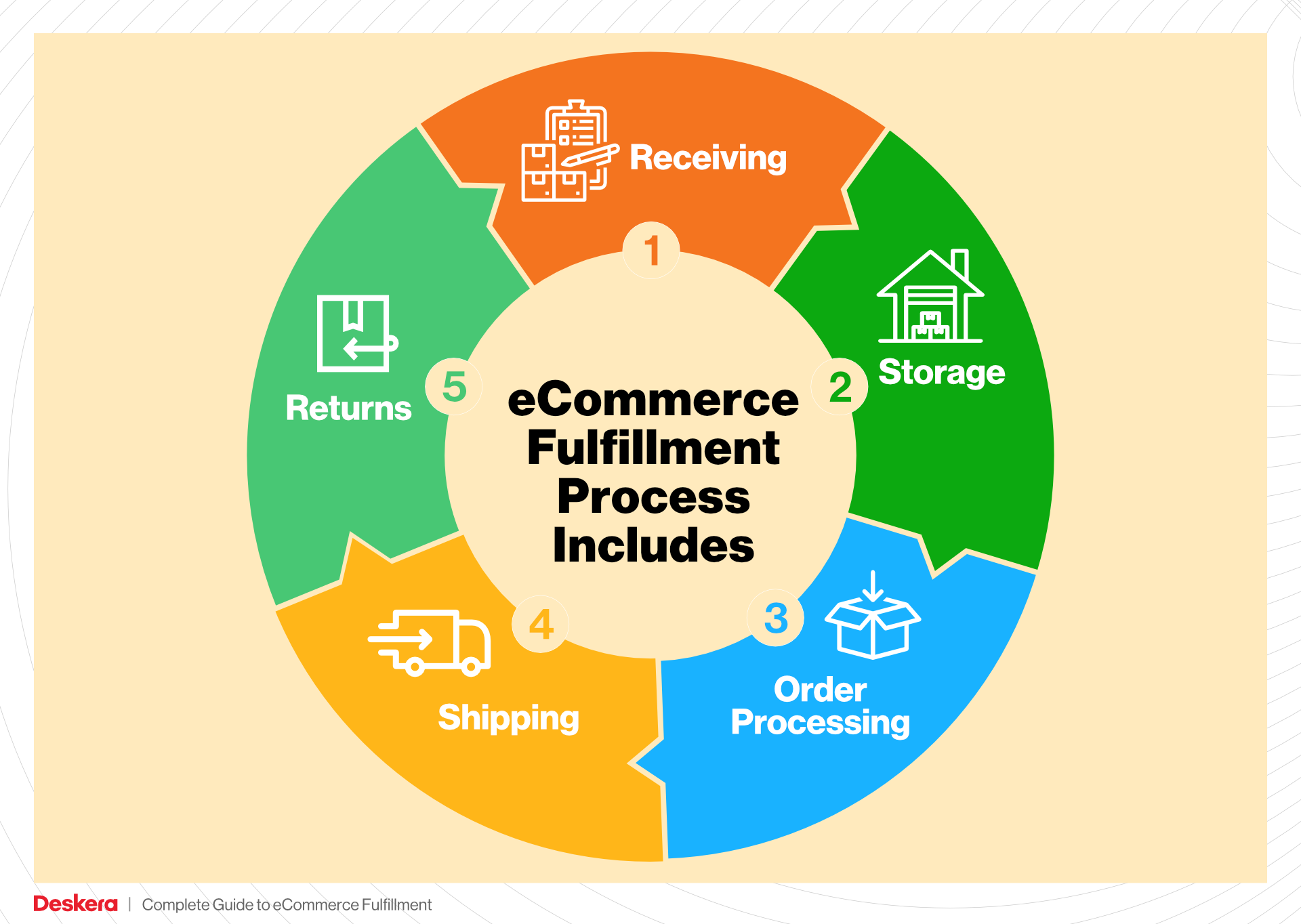
What You’ll Learn In This Guide
- What is E-commerce Fulfillment? An Introduction for Growing Businesses
- The Order Fulfillment Process: From ‘Buy’ Button to Customer’s Door
- Comparing Fulfillment Models: In-House vs. 3PL vs. Dropshipping
- A Deep Dive into Amazon FBA: Pros, Cons, and Who It’s For
- Core Services Offered by Fulfillment Centers
- How to Choose a Fulfillment Partner: A 6-Point Checklist
- Understanding Fulfillment Pricing: A Breakdown of Common Fees
- Frequently Asked Questions (FAQs) about Fulfillment
- Conclusion: Is Outsourcing Fulfillment the Right Move for Your Business?
- Important Disclaimer
The Order Fulfillment Process: From ‘Buy’ Button to Customer’s Door
1. Receiving Inventory
The first step in the order fulfillment process is receiving inventory. When new stock arrives at your warehouse, it is crucial to inspect the shipment for accuracy and quality. This step often involves checking against purchase orders to confirm that the correct items and quantities have been received. The use of Stock Keeping Units (SKUs) is essential here. Each product should have a unique SKU that allows for easy identification and tracking throughout the inventory management system.
Why is this step important? Proper receiving of inventory ensures that your stock levels are accurate, which directly affects your ability to fulfill customer orders. If discrepancies occur at this stage, it can lead to stockouts or overstock situations, both of which can harm customer satisfaction and your bottom line. A well-organized receiving process reduces the likelihood of errors and sets a solid foundation for the subsequent steps in fulfillment.
2. Warehouse Storage
Once the inventory has been received and verified, the next step is warehouse storage. This involves placing products in designated storage areas within the warehouse. Efficient storage practices are vital for maximizing space and improving the speed of order fulfillment. Utilizing a systematic approach, such as zone picking or bin location strategies, can help streamline this process.
The importance of effective warehouse storage cannot be overstated. It not only impacts the ease of accessing products but also influences inventory turnover rates and operational efficiency. A well-organized warehouse reduces the time employees spend locating items, which can significantly enhance overall productivity. Key terms associated with this step include “bin locations” and “inventory management systems,” which help keep track of where each SKU is stored.
3. Order Picking
Order picking is the process of retrieving items from storage to fulfill customer orders. This step can be performed using various methods, including single order picking, batch picking, or wave picking, depending on the volume of orders and the layout of the warehouse. Pick lists, which detail the items to be gathered for each order, are essential tools that guide warehouse staff through this process.
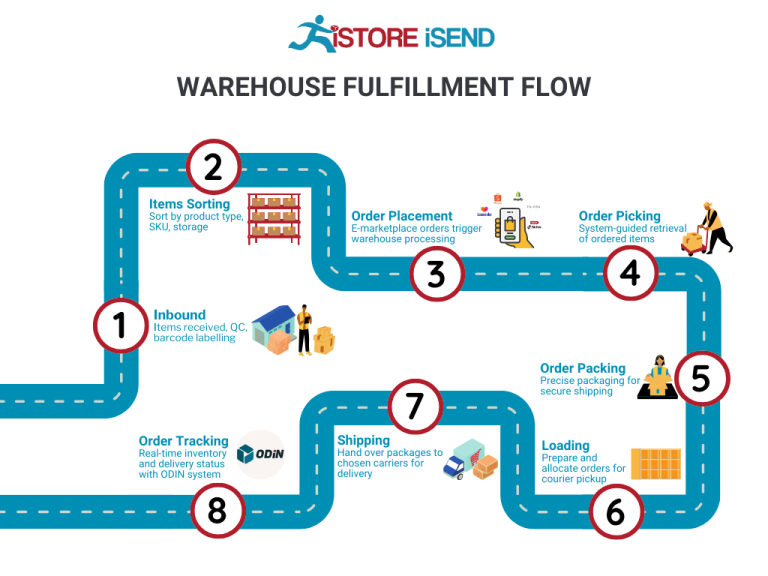
The significance of order picking lies in its direct impact on order accuracy and fulfillment speed. Errors in picking can lead to incorrect shipments, resulting in customer dissatisfaction and increased return rates. Implementing technologies such as barcode scanners or pick-to-light systems can enhance the picking process, improving accuracy and efficiency. For businesses looking to scale, refining the picking process can lead to significant improvements in operational performance and customer satisfaction.
4. Order Packing
After items have been picked, the next step is order packing. This involves securely packaging the products for shipment to ensure they arrive at the customer’s door in perfect condition. Proper packing materials and techniques must be used to protect items during transit. Common practices include using bubble wrap, packing peanuts, and sturdy boxes, along with packing slips that detail the contents of the package.
The packing step is crucial because it directly affects the customer’s experience. Poorly packed items can lead to damage during shipping, resulting in returns and negative reviews. Additionally, efficient packing can optimize shipping costs by ensuring that packages are not oversized. Key terms associated with this step include “packing slips” and “dimensional weight pricing,” which can influence both customer satisfaction and shipping expenses.
5. Shipping & Delivery
The final step in the order fulfillment process is shipping and delivery. This involves selecting the appropriate shipping method and carrier based on factors such as cost, delivery speed, and destination. Once the order is shipped, it’s important to provide tracking information to customers, allowing them to monitor their package’s journey.
The significance of this step cannot be understated, as timely delivery is often a key factor in customer satisfaction and loyalty. Efficient shipping processes can also reduce operational costs and improve profit margins. Businesses should consider utilizing shipping software that integrates with their e-commerce platforms to streamline this process. Key terms related to this step include “shipping carriers” and “tracking numbers,” both of which are essential for effective logistics management.
By understanding and optimizing each of these five steps—Receiving Inventory, Warehouse Storage, Order Picking, Order Packing, and Shipping & Delivery—e-commerce businesses can enhance their order fulfillment processes, ultimately leading to increased customer satisfaction and a stronger competitive edge in the market.
Comparing Fulfillment Models: In-House vs. 3PL vs. Dropshipping
Fulfillment Model Comparison
| Model | Who Handles Inventory | Best For (Business Stage) | Key Advantage | Key Disadvantage |
|---|---|---|---|---|
| In-House Fulfillment | Business Owns Inventory | Established Businesses | Full control over inventory and fulfillment | High overhead costs and operational complexity |
| Third-Party Logistics (3PL) | 3PL Provider | Growing Businesses | Scalable and flexible logistics solutions | Less control over inventory and fulfillment process |
| Dropshipping | Supplier | Startups & Small Businesses | Low initial investment and risk | Lower profit margins and potential quality issues |
In-House Fulfillment
In-house fulfillment refers to managing the storage, processing, and shipping of products directly within a company’s own facilities. This model is often favored by established businesses that have the resources to maintain their own warehouse and logistics operations. One of the primary advantages of in-house fulfillment is the level of control it offers over inventory management and the overall fulfillment process. Businesses can implement their own quality control measures, optimize shipping processes, and maintain direct oversight of customer service. However, this model also comes with significant disadvantages, including high overhead costs associated with staffing, warehousing, and technology investments. Additionally, the complexity of operations can increase as a business scales, necessitating further investment in infrastructure and staff training.
Third-Party Logistics (3PL)
Third-party logistics (3PL) involves outsourcing logistics operations to a specialized provider that handles inventory management, warehousing, and shipping on behalf of the business. This model is particularly beneficial for growing businesses that require scalable logistics solutions without the burden of managing their own fulfillment centers. By leveraging a 3PL provider, businesses can gain access to advanced technology, expertise in logistics, and a network of distribution centers, which can enhance shipping efficiency and reduce costs. However, a key disadvantage of using a 3PL is the loss of direct control over inventory and fulfillment processes. Businesses may face challenges in communication and coordination with the 3PL provider, which can affect customer satisfaction if not managed effectively.
Dropshipping
Dropshipping is a fulfillment model where the retailer does not hold inventory but instead relies on suppliers to ship products directly to customers. This model is particularly appealing for startups and small businesses due to its low initial investment and minimal risk. Since the retailer does not need to invest in inventory upfront, they can focus on marketing and customer acquisition. Additionally, dropshipping allows for a wide product selection without the financial burden of unsold inventory. However, the key disadvantage of dropshipping lies in the lower profit margins, as suppliers often take a significant cut of the sale price. Furthermore, businesses may encounter quality control issues, as they have limited oversight over the products being shipped, which can lead to customer dissatisfaction and potential damage to brand reputation.
Conclusion
Selecting the right fulfillment model is crucial for e-commerce businesses looking to scale their operations effectively. Each model presents distinct advantages and disadvantages that align with different business stages and goals. Understanding these nuances can help business owners, operations managers, and entrepreneurs make informed decisions that optimize logistics, enhance customer satisfaction, and ultimately drive growth. When considering a fulfillment strategy, it is essential to assess factors such as cost, control, scalability, and the nature of the product offerings to determine the most suitable approach for your business.
A Deep Dive into Amazon FBA: Pros, Cons, and Who It’s For
Understanding Fulfillment by Amazon (FBA)
Fulfillment by Amazon (FBA) is a service offered by Amazon that allows sellers to store their products in Amazon’s fulfillment centers. Amazon then takes care of storage, packaging, and shipping on behalf of the sellers. This model not only streamlines the logistics for e-commerce businesses but also enhances customer service through Amazon’s established infrastructure.
When a customer places an order for a product fulfilled by Amazon, the item is picked from the inventory, packed, and shipped directly to the customer by Amazon. Additionally, FBA provides customer service and handles returns, which can significantly reduce the operational burden on sellers.
How FBA Works
- Product Listing: Sellers list their products on Amazon and select FBA as their fulfillment method.
- Shipping Inventory: Sellers ship their products to Amazon’s fulfillment centers. Amazon provides guidelines on how to package and label items.
- Storage: Once the products arrive at the fulfillment center, they are stored until sold. Amazon manages the inventory and ensures it is organized and accessible.
- Order Fulfillment: When a customer orders a product, Amazon picks, packs, and ships the item directly to the customer.
- Customer Service: Amazon handles all customer inquiries and returns related to FBA orders, allowing sellers to focus on other aspects of their business.
- Payments: Sellers receive payments for their sales, minus FBA fees, which are deducted from their account.
Pros of Amazon FBA
-
Prime Eligibility: Products fulfilled by Amazon are eligible for Amazon Prime, which can lead to increased sales. Prime members tend to purchase more frequently and often prefer Prime-eligible products due to faster shipping options.
-
Customer Trust: Selling through FBA can enhance customer trust, as buyers recognize and value the reliability of Amazon’s logistics and customer service. This trust can lead to higher conversion rates compared to non-FBA listings.
-
Multi-Channel Fulfillment: FBA can be used to fulfill orders from other sales channels, such as eBay or your own e-commerce site. This flexibility allows sellers to centralize their inventory management and leverage Amazon’s fulfillment network, irrespective of where the sale occurs.
-
Scalability: FBA allows businesses to scale operations without the need for extensive warehousing and logistics management. Sellers can focus on marketing and product development while Amazon handles the heavy lifting of order fulfillment.
-
Global Reach: With FBA, sellers can reach customers worldwide, as Amazon operates multiple international fulfillment centers. This global presence can significantly broaden a seller’s market reach.

Cons of Amazon FBA
-
High Fees: While FBA offers many conveniences, it comes at a cost. Sellers must pay various fees, including storage fees for the space their products occupy in Amazon’s warehouses and fulfillment fees based on the size and weight of the products. These fees can cut significantly into profit margins.
-
Strict Inventory Rules: Amazon enforces strict inventory management policies. Sellers must ensure that their inventory is compliant with Amazon’s standards, including labeling and packaging requirements. Failure to comply can result in additional fees or penalties.
-
Commingling Risks: FBA uses a commingled inventory model, meaning that products from different sellers can be stored together. This can lead to issues such as receiving returns for items that were not sold by you, potentially damaging your brand reputation if customers receive the wrong items.
-
Loss of Control: When utilizing FBA, sellers relinquish some control over the fulfillment process. They depend on Amazon’s systems and policies, which can change without notice, potentially affecting their business operations.
-
Inventory Management Challenges: Managing inventory levels can be complex, especially if you have products that sell at different rates. Overstocking can lead to increased storage fees, while understocking can result in missed sales opportunities and dissatisfied customers.
Who is FBA Best For?
Fulfillment by Amazon is particularly well-suited for:
-
Small to Medium-Sized E-commerce Businesses: These sellers may lack the resources to manage their own fulfillment and logistics. FBA provides a way to offer fast shipping and excellent customer service without the overhead of maintaining a warehouse.
-
Businesses Looking to Scale: Companies that want to grow their sales quickly can benefit from FBA’s infrastructure, which allows for rapid scaling without the associated logistics complexities.
-
Sellers of High-Volume Products: If you sell products with high turnover rates, FBA can help you manage the logistics efficiently, allowing you to focus on sourcing and marketing.
-
New Entrepreneurs: Those new to e-commerce can leverage FBA to avoid the initial challenges of managing shipping and customer service, enabling them to learn the ropes without being overwhelmed.
-
Brands Seeking Trust and Visibility: If establishing trust is critical for your business, using FBA can enhance your credibility on Amazon, especially for new or lesser-known brands.
In conclusion, Fulfillment by Amazon offers a powerful platform for e-commerce sellers, enabling them to streamline their operations and reach a broader audience. However, potential users must weigh the benefits against the associated costs and challenges to determine if FBA aligns with their business goals.
Core Services Offered by Fulfillment Centers
Inventory Management & Warehousing
Fulfillment centers provide comprehensive inventory management and warehousing solutions that are crucial for e-commerce businesses looking to scale operations. This service involves the systematic handling of stock, from receiving goods to storing them efficiently until they are needed for order fulfillment.
What It Is:
Inventory management includes tracking stock levels, managing reorders, and ensuring that products are stored in a manner that maximizes space and accessibility. Fulfillment centers utilize sophisticated inventory management systems (IMS) that integrate with e-commerce platforms, allowing real-time visibility into stock levels.
Benefits:
- Optimized Stock Levels: By keeping track of inventory in real-time, businesses can avoid stockouts or overstocking, which can lead to lost sales or increased holding costs.
- Space Efficiency: Fulfillment centers are equipped to store large quantities of inventory, freeing up valuable space in a business’s own facilities.
- Improved Cash Flow: Efficient inventory management reduces the capital tied up in unsold stock, allowing businesses to invest in other areas of growth.
Pick and Pack Services
Pick and pack services are a cornerstone of fulfillment operations. This process involves selecting items from inventory (picking) and then packaging them for shipment (packing).
What It Is:
When an order is placed, fulfillment center staff retrieve the ordered items from the warehouse, package them according to specifications (including branding, gift wrapping, etc.), and prepare them for shipping. This process often utilizes advanced technologies like barcode scanning to ensure accuracy.
Benefits:
- Speedy Order Fulfillment: The efficiency of pick and pack services ensures that orders are processed quickly, which is vital in today’s fast-paced e-commerce environment.
- Error Reduction: Automated systems and trained staff help minimize picking errors, reducing the likelihood of returns and improving customer satisfaction.
- Scalability: As order volumes increase, fulfillment centers can easily scale their operations to handle the demand without requiring additional resources from the business.
Kitting and Assembly
Kitting and assembly services involve creating bundled products or assembled goods from individual components, which can be especially beneficial for e-commerce businesses that offer customizable or multi-part products.
What It Is:
Kitting refers to the process of combining multiple products into a single package for sale. Assembly involves putting together various components into a finished product. For instance, a fulfillment center might assemble a gift set that includes multiple items or create a complex product that requires several parts.
Benefits:
- Enhanced Product Offering: Kitting allows businesses to offer unique product bundles that can attract customers and increase average order value.
- Time Savings: Outsourcing kitting and assembly to fulfillment centers saves time and labor costs, enabling businesses to focus on core activities such as marketing and customer service.
- Quality Control: Fulfillment centers often have established quality control processes to ensure that assembled products meet specified standards, enhancing brand reputation.
Returns Management (Reverse Logistics)
Returns management is a critical service offered by fulfillment centers that deals with the processing of returned products. This aspect of fulfillment can significantly impact customer satisfaction and overall business efficiency.
What It Is:
Returns management involves handling the return process efficiently, from receiving the returned items to inspecting, restocking, or disposing of them as necessary. Fulfillment centers often have dedicated teams and systems in place to manage returns seamlessly.
Benefits:
- Customer Satisfaction: A smooth returns process enhances the customer experience, leading to higher retention rates and positive reviews, which are crucial for e-commerce success.
- Cost Efficiency: By outsourcing returns management, businesses can reduce the overhead costs associated with handling returns in-house.
- Data Insights: Fulfillment centers can provide valuable insights into return trends, helping businesses identify issues with products and improve overall quality and customer satisfaction.
By leveraging the core services offered by fulfillment centers, e-commerce businesses can streamline their operations, enhance customer experiences, and ultimately scale their logistics effectively. Each service plays a pivotal role in creating a robust supply chain that supports growth and profitability in a competitive landscape.
How to Choose a Fulfillment Partner: A 6-Point Checklist
Location & Warehouse Network
Importance:
The geographical location of your fulfillment partner’s warehouses plays a crucial role in shipping efficiency and cost. A strategically placed warehouse network allows for faster delivery times and reduced shipping costs, which are vital for maintaining customer satisfaction and competitive pricing.
Questions to Ask:
– Where are your warehouses located, and how does this align with our customer base?
– What is your average shipping time to major regions?
– Do you have the ability to open new locations as we expand?
Technology & Integrations
Importance:
In today’s e-commerce landscape, technology integration is key to seamless operations. Your fulfillment partner should have robust software that integrates easily with your e-commerce platform, inventory management system, and customer relationship management (CRM) tools. This ensures real-time data sharing and improves order accuracy.
Questions to Ask:
– What technology platforms do you use for inventory management and order processing?
– Can your system integrate with our existing e-commerce platform and other tools?
– Do you offer real-time tracking for orders, and how is this communicated to customers?
Specializations (e.g., cold storage, oversized items)
Importance:
Different businesses have unique fulfillment needs. If you deal with perishable goods, oversized items, or specialty products, you’ll need a partner who specializes in those areas. Having the right capabilities ensures your products are stored and handled properly, which minimizes waste and maximizes efficiency.
Questions to Ask:
– Do you have specific capabilities for handling our product type (e.g., cold storage, hazardous materials)?
– How do you ensure compliance with industry regulations for our products?
– What processes do you have in place for quality control and damage prevention?
Scalability & Capacity
Importance:
As your business grows, your fulfillment needs will evolve. Choosing a partner that can scale with you is essential. This includes having the capacity to handle increased order volumes during peak seasons and the flexibility to adapt to changes in your business model.
Questions to Ask:
– What is your current capacity, and how can you accommodate our growth?
– How do you handle seasonal fluctuations in demand?
– What processes do you have in place to ensure we can scale without disruptions?
Pricing and Contracts
Importance:
Understanding the pricing structure and contract terms is critical for budgeting and financial planning. Transparent pricing helps avoid unexpected costs, while favorable contract terms can provide the flexibility needed for growth.
Questions to Ask:
– What are your pricing models (e.g., per order, per item, monthly fees)?
– Are there any hidden fees we should be aware of (e.g., storage fees, handling charges)?
– What are the terms of the contract, and is there flexibility to renegotiate as our needs change?
Customer Support & Reviews
Importance:
Reliable customer support is vital for resolving issues quickly and maintaining smooth operations. Additionally, reviews and testimonials provide insight into the partner’s reliability and service quality, helping you make an informed decision.
Questions to Ask:
– What level of customer support do you offer (e.g., dedicated account manager, 24/7 support)?
– How do you handle issues related to order fulfillment or shipping delays?
– Can you provide references or case studies from similar businesses that have worked with you?
Conclusion
Choosing the right fulfillment partner can significantly impact your e-commerce business’s growth and operational efficiency. By carefully evaluating potential partners based on the criteria outlined in this checklist, you can make a well-informed decision that aligns with your business goals. Ensure that you prioritize open communication and transparency during the selection process to foster a productive long-term partnership.
Understanding Fulfillment Pricing: A Breakdown of Common Fees
Initial Setup Fees
Initial setup fees are typically charged by fulfillment centers to establish your account and integrate your systems. This fee covers the cost of onboarding, which may include software setup, account management, and training on how to use the fulfillment center’s technology.
Calculation: This fee can vary significantly based on the complexity of your operations and the fulfillment provider’s pricing structure. Some providers may charge a flat fee, while others may base it on the number of SKUs you need to set up or the amount of time required for training and integration. On average, initial setup fees can range from $100 to several thousand dollars, depending on your specific needs.
Receiving Fees
Receiving fees are incurred when the fulfillment center takes possession of your inventory. This fee typically covers the labor and resources needed to unload, inspect, and store your products.
Calculation: Receiving fees are generally charged per shipment and can be based on a flat rate or on the volume of goods received. For example, a fulfillment center might charge $0.25 to $1.00 per unit received, or a minimum fee for smaller shipments. Understanding the specifics of how your provider calculates this fee is crucial, especially if you plan to send frequent shipments.
Storage Fees (per pallet/bin)
Storage fees are assessed for the space your inventory occupies within the fulfillment center. This fee is essential for maintaining the facilities and managing your stock.
Calculation: Storage fees are typically calculated on a monthly basis and can be charged per pallet or per bin. For instance, a fulfillment center may charge anywhere from $10 to $50 per pallet per month, depending on the location and the type of products stored. Some providers might also charge based on the cubic footage of your inventory, so it’s vital to clarify the storage fee structure to accurately assess your costs.
Pick & Pack Fees (per item/order)
Pick and pack fees cover the labor involved in retrieving items from storage and preparing them for shipment. This service is crucial for ensuring that orders are fulfilled accurately and efficiently.
Calculation: These fees can be structured in several ways. Common models include charging per item picked and packed, or a flat fee per order. For example, a typical pick fee might range from $0.50 to $2.00 per item, while packing fees could add another $0.50 to $1.50 per order. Understanding how your provider calculates these fees will help you forecast costs more effectively, especially as your order volume fluctuates.
Shipping Fees
Shipping fees are the costs associated with transporting your products from the fulfillment center to your customers. This is often one of the most significant costs in the fulfillment process.
Calculation: Shipping fees can vary based on several factors, including the shipping method (standard, expedited, overnight), package weight and dimensions, and the destination. Fulfillment centers often have negotiated rates with carriers that can benefit your business, but it’s essential to understand how these fees are calculated. You might see rates structured as flat fees, weight-based fees, or a combination of both. Additionally, some providers might offer discounted shipping rates, which can further impact your overall logistics costs.
Tips for Getting an Accurate Quote
-
Provide Detailed Information: When requesting a quote, offer as much detail as possible about your business needs, including the types of products you sell, average order volumes, and seasonal fluctuations.
-
Ask for a Breakdown: Request a detailed breakdown of all potential fees. This will help you avoid unexpected charges and give you a clearer picture of the total cost of fulfillment.
-
Inquire About Discounts: Ask if the fulfillment center offers volume discounts or other incentives for businesses that can commit to a certain level of sales or shipping.
-
Compare Providers: Don’t settle for the first quote you receive. Compare multiple fulfillment centers to find the one that offers the best combination of services and pricing.
-
Negotiate Terms: Many fulfillment centers are open to negotiation, especially if you can demonstrate potential for high volume. Don’t hesitate to discuss terms that could lower your costs.
By understanding these common fulfillment pricing models and following these tips, you can make informed decisions that will help your e-commerce business scale effectively while managing logistics costs.
Frequently Asked Questions (FAQs) about Fulfillment
1. What were the key actions taken by President Polk to fulfill Manifest Destiny?
President Polk’s administration focused on territorial expansion through several key actions, including the annexation of Texas, negotiations for the Oregon Territory, and the instigation of the Mexican-American War. These efforts were aimed at expanding U.S. territory from the Atlantic to the Pacific, which was seen as a divine right by many Americans.
2. How did the annexation of Texas contribute to Manifest Destiny?
The annexation of Texas in 1845 was significant as it involved incorporating a large territory that had a strong American presence, furthering the belief that the U.S. was destined to expand across the continent. This act not only increased the land area of the nation but also intensified the debate over slavery, as Texas was a slave state.
3. What was the Oregon Trail, and how did it relate to Manifest Destiny?
The Oregon Trail was a key route for American settlers moving westward to claim land in the Oregon Territory. It symbolized the pursuit of Manifest Destiny as thousands of Americans traveled the trail seeking new opportunities, illustrating the belief that it was their fate to expand across the continent.
4. What role did the Mexican-American War play in fulfilling Manifest Destiny?
The Mexican-American War (1846-1848) was a direct result of Polk’s desire to acquire California and New Mexico. The war resulted in significant territorial gains for the United States, further solidifying the notion of Manifest Destiny by expanding U.S. borders to the Pacific Coast.
5. What were the economic motivations behind Polk’s pursuit of Manifest Destiny?
Economic factors included the desire for new land for agriculture, resources, and trade routes. As the population grew, the need for more land to support farming and economic activities became crucial, driving the expansionist agenda.
6. How did public sentiment influence Polk’s policies on expansion?
Public sentiment was largely in favor of expansion, fueled by a sense of nationalism and the belief in Manifest Destiny. This support allowed Polk to pursue aggressive expansionist policies, as many Americans viewed the acquisition of new territories as both a right and a necessity.
7. What was the significance of the “Fifty-Four Forty or Fight!” slogan?
This slogan represented the expansionist desire to claim the entire Oregon Territory up to latitude 54°40′. Although Polk eventually compromised on the boundary at the 49th parallel, the slogan encapsulated the fervent spirit of Manifest Destiny and the willingness to go to war for territorial claims.
8. What were the long-term impacts of Polk’s fulfillment of Manifest Destiny?
The long-term impacts included the significant expansion of U.S. territory, the intensification of sectional conflicts over slavery, and the establishment of a more assertive American presence on the global stage. This era set the stage for future conflicts and shaped the geopolitical landscape of North America.
9. How does the concept of Manifest Destiny relate to modern expansionist policies?
Modern expansionist policies often echo the principles of Manifest Destiny in their pursuit of economic growth and influence. While today’s expansions may focus on international trade and technology, the underlying drive for growth and opportunity can be traced back to the ideals of Manifest Destiny.
10. Why is understanding Polk’s fulfillment of Manifest Destiny important for business owners today?
Understanding this historical context is crucial for business owners as it highlights the impact of government policies on economic opportunities and territorial expansion. Recognizing how historical events shape current markets can inform strategic planning and expansion decisions in today’s global economy.
Conclusion: Is Outsourcing Fulfillment the Right Move for Your Business?
The Advantages of Outsourcing Fulfillment
Outsourcing your fulfillment can be a game-changer for your e-commerce business. By leveraging a fulfillment service, you can save significant time and resources. This allows you to focus on core business activities like marketing, product development, and customer engagement, rather than getting bogged down in the logistics of storage, packing, and shipping.
Scalability is another critical benefit. As your business grows, so do your fulfillment needs. A third-party logistics provider can easily adjust to fluctuations in order volume, ensuring you can meet customer demand without the headaches of managing increased inventory and staffing yourself. This flexibility is particularly advantageous during peak seasons or promotional events when order volumes can surge unexpectedly.
Moreover, fulfillment partners bring specialized expertise to the table. They are well-versed in industry best practices, shipping regulations, and the latest technology, enabling them to streamline operations and enhance efficiency. This not only improves delivery times but can also lead to cost savings that you can pass on to your customers or reinvest into your business.
Choosing the Right Fulfillment Partner
However, the effectiveness of outsourcing hinges on selecting the right fulfillment partner. It’s essential to assess their capabilities, technology, and track record to ensure they align with your business goals and customer expectations. A well-matched partner can provide the support you need to scale effectively and sustainably.
Call to Action
If you’re contemplating whether outsourcing fulfillment is the right next step for your business, start by auditing your current shipping process. Evaluate where inefficiencies lie and how a fulfillment service could enhance your operations. By making an informed decision, you can position your business for growth and success in the competitive e-commerce landscape.
Important Disclaimer
⚠️ Important Disclaimer
The information in this guide is for educational purposes. Fulfillment services, pricing, and platform features change frequently. Always conduct your own due diligence and consult with providers directly before making business decisions.
